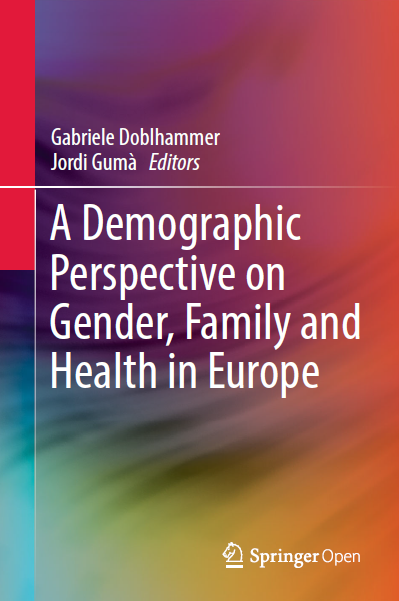Demografický pohled na gender, rodiny a zdraví v Evropě
Tato volně dostupná publikace zkoumá vztahy mezi rodinou, genderem a zdravím v Evropě z demografické perspektivy. Pomáhá pochopit charakteristiky a trendy v každé ze tří oblastí a jejich vzájemné vztahy. Překonává úzkou specializaci odborníků v demografickém výzkumu, kteří se často zaměřují buď na rodinu a fertilitu nebo zdraví a úmrtnost. Publikace se zabývá novými formami rodiny a partnerství v mladším a středním věku a jejich vztahem a vlivem na zdraví. Zkoumá celoživotní rodinnou biografií a současnou rodinnou situací starších osob. Publikace ukazuje, že zdraví partnerů se s věkem přibližuje a že zdraví jednoho je nejvýznamnějším faktorem pro zdraví druhého z páru. Pro hodnocení zdraví a dopadů na zdraví je zásadní prizma genderu. Kniha srovnává dvanáct evropských zemí, které představují různé systémy sociální politiky a zaměřuje se na Rakousko, Německo a Itálii, kterým v minulosti nebyla věnována dostatečná pozornost, a na Švédsko. Čtenáři se tak mohou dozvědět o různých pojetích rodiny a zdraví a rozdílech v rámci zemí a mezi jejich etnickými skupinami.  Publikace představuje vhodný zdroj poznatků pro studenty, akademiky, tvůrce politik a výzkumníky, kteří budou rozhodovat o zaměření dalšího výzkumu v oblasti genderu a zdraví.
Publikace představuje vhodný zdroj poznatků pro studenty, akademiky, tvůrce politik a výzkumníky, kteří budou rozhodovat o zaměření dalšího výzkumu v oblasti genderu a zdraví.
This open access book examines the triangle between family, gender, and health in Europe from a demographic perspective. It helps to understand patterns and trends in each of the three components separately, as well as their interdependencies. It overcomes the widely observable specialization in demographic research, which usually involves researchers studying either family or fertility processes or focusing on health and mortality.
Coverage looks at new family and partnership forms among the young and middle-aged, their relationship with health, and the pathways through which they act. Among the old, lifelong family biography and present family situation are explored. Evidence is provided that partners advancing in age start to resemble each other more closely in terms of health, with the health of the partner being a crucial factor of an individual’s own health. Gender-specific health outcomes and pathways are central in the designs of the studies and the discussion of the results. The book compares twelve European countries reflecting different welfare state regimes and offers country-specific studies conducted in Austria, Germany, Italy – all populations which have received less attention in the past – and Sweden. As a result, readers discover the role of different concepts of family and health as well as comparisons within European countries and ethnic groups.
It will be an insightful resource for students, academics, policy makers, and researchers that will help define future research in terms of gender and public health.
Zdroj: Population Europe



